AMD Ryzen 5 2400G and Ryzen 3 2200G Integrated Graphics Frequency Scaling
by Gavin Bonshor on September 28, 2018 12:30 PM EST- Posted in
- CPUs
- AMD
- GPUs
- Overclocking
- Zen
- APU
- Vega
- Ryzen
- Ryzen 3 2200G
- Ryzen 5 2400G
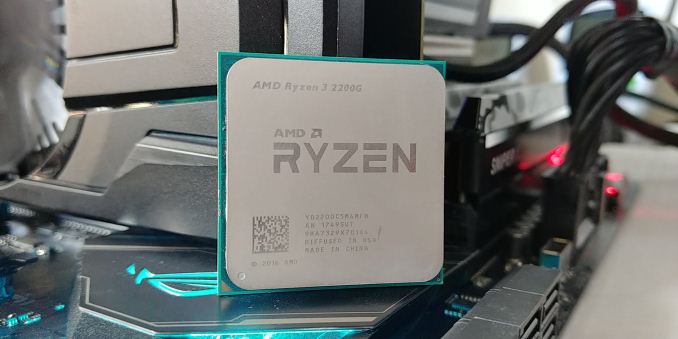
One of the last poignant questions from our previous Ryzen APU coverage is the way that integrated graphics scales with overclocking. As these low-end Ryzen APUs are all about gaming on a budget, our previous looks into core frequency and memory scaling lead naturally into examining how well the graphics overclocks and what extra performance can be had with a light touch of BIOS settings. We pushed both of our APUs to 1600 MHz on the graphics, representing a +45% overclock, which translates into some interesting results.
| Recommended Reading on AMD Ryzen APUs | |||
| 2400G Review | 2200G Review | Overclocking | Delidding |
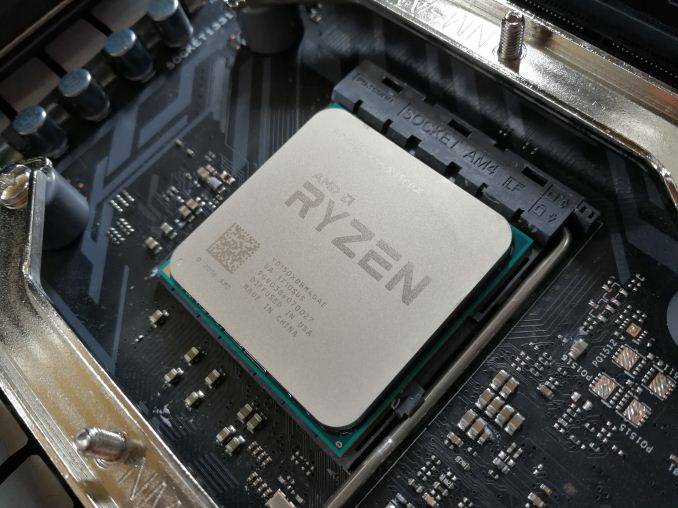 |
 |
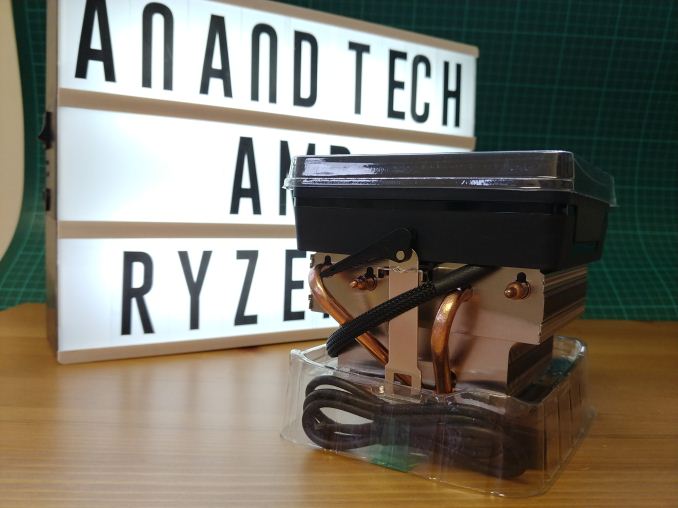 |
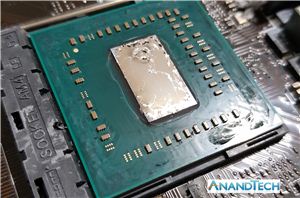 |
| Core Scaling | Memory Scaling | Graphics Scaling | Best CPUs |
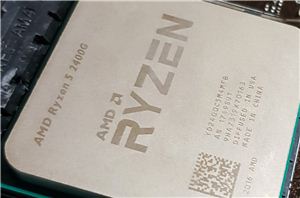 |
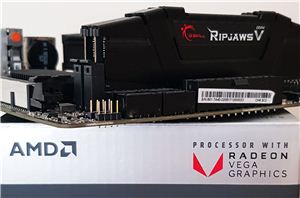 |
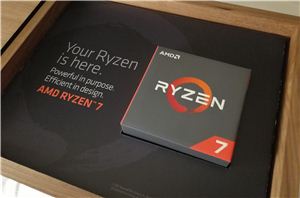 |
|
Ryzen 2000 Series APUs: Going For Gaming
The pairing of AMD's high-performance Zen compute cores and Vega graphics into a tidy little package was a resuscitation for integrated graphics, making the low-end desktop market a lot more interesting, as our Ryzen 5 2400G and Ryzen 3 2200G review concluded. In order to increase performance for gaming, there were three potential avenues to look into. The first one led to our analysis into how memory frequency scales with AMD’s APUs, based on the relationship between memory performance and gaming, showed that memory can have a positive impact on performance. The second was our Ryzen 5 2400G and Ryzen 3 2200G core frequency scaling article, which showed that increasing the CPU core speed didn’t have the effect on gaming performance one would potentially hope to find. The last of the set is overclocking the integrated graphics frequency, which often leads to a direct increase in frame rates.
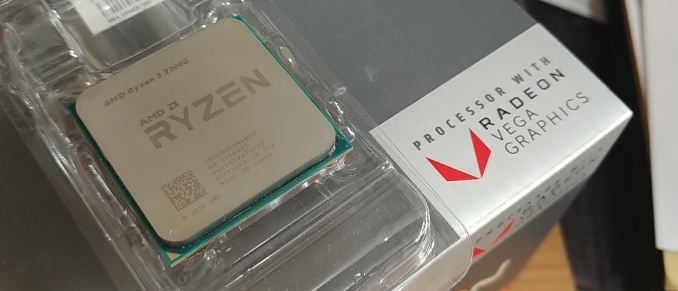
The interesting thing to take from our Ryzen 2000 series APU overclocking guide was that the performance increase was easy to spot when every component on the amalgamated Zen and Vega package plus memory was pushed. The biggest take from our Ryzen APU memory scaling was that the Infinity Fabric interconnect did improve performance from memory in gaming, more so than pure CPU core frequency in certain cases. It was also noted that overclocking everything at once was more difficult than increasing each part independently - what was a good individual overclock, was not always possible when the CPU, memory, and graphics were overclocked together.
Focusing specifically on the intergrated graphics for this article, the primary aim is to ascertain whether or not overclocking the Vega cores on their own yields a big enough benefit in our game testing suite to make it worthwhile. As long as the graphics can continually be fed from the memory and infinity fabric, we should see a good linear increase, especially when the GPU is the bottleneck, however the resolutions aimed at these GPUs might throw interesting features into the mix.
In this review we will recover overclocking the integrated graphics, and take each APU from its stock graphics frequency up to the highest overclock we could achieve, in 50 MHz steps. The results, are interesting.
Test Bed and Hardware
As per our testing policy, we take a premium category motherboard suitable for the socket and equip the system with a suitable amount of memory. With this test setup, we are using the BIOS to set the integrated graphics frequency using the provided straps on the MSI B350I Pro AC motherboard. The memory is set to the maximum supported official speed. The CPU core frequency on both the Ryzen 5 2400G and Ryzen 3 2200G was left at their respective default settings.
| Test Setup | |||
| Processors | AMD Ryzen 3 2200G | AMD Ryzen 5 2400G | |
| Motherboard | MSI B350I Pro AC | ||
| Cooling | Thermaltake Floe Riing RGB 360 | ||
| Power Supply | Thermaltake Toughpower Grand 1200 W Gold PSU | ||
| Memory | G.Skill Ripjaws V DDR4-2933 16-18-18 2x4 GB 1.35 V |
||
| Integrated GPU | Vega 8 1100 MHz |
Vega 11 1250 MHz |
|
| Hard Drive | Crucial MX300 1 TB | ||
| Case | Open Test Bed | ||
| Operating System | Windows 10 Pro | ||
We took our previous gaming suite for this comparison. It's a little dated, but it still checks out. We will be using newer games in future analysis pieces.
| Titles Tested | |||||
| Game | Genre | Release Date | API | IGP Settings |
|
| Shadow of Mordor | Action / RPG | Sep 2014 |
DX11 | 1080p Medium |
|
| F1 2017 | Racing | Aug 2017 |
DX11 | 1080p Medium |
|
| Civilization VI | RTS | Oct 2016 |
DX12 | 1080p Low |
|
| Total War: WARHAMMER 2 | RTS | Sept 2017 |
DX11 | 1080p Medium |
|
| Ashes of the Singularity | RTS | Mar 2016 |
DX12 | 1080p Standard |
|
| Rise of The Tomb Raider | Action | Nov 2015 |
DX12 | 1080p Medium |
|
AMD's APU Stack
Since our last big coverage of AMD's Ryzen APUs, it was announced that several new parts will be coming to the market under the 'Athlon' brand. These will be much cheaper parts, starting at $55, and offering fewer cores and fewer Vega compute units for that market.
| AMD's APU Stack | |||||||
| AnandTech | Zen | Cores w/HT |
Base Freq |
Turbo Freq |
Vega CUs |
TDP | MSRP |
| Ryzen 5 2400G | Zen | 4 / 8 | 3600 | 3900 | 11 | 65W | $169 |
| Ryzen 3 2200G | Zen | 4 / 4 | 3500 | 3700 | 8 | 65W | $99 |
| Athlon 240GE | Details to be disclosed in Q4 | ||||||
| Athlon 220GE | Details to be disclosed in Q4 | ||||||
| Athlon 200GE | Zen | 2 / 4 | 3200 | - | 3 | 35W | $55 |
| * 2400GE and 2200GE are 'released' but not at retail | |||||||
We currently have the 200GE in for a future review, but everything in this article should apply to this APU as well.
Pages In This Review
- AMD Ryzen 2000 Series: Going For Gaming
- Overclocking the Integrated Graphics: How To
- AMD Ryzen 5 2400G: Gaming Tests (1)
- AMD Ryzen 5 2400G: Gaming Tests (2)
- AMD Ryzen 3 2200G: Gaming Tests (1)
- AMD Ryzen 3 2200G: Gaming Tests (2)
- Overall Analysis


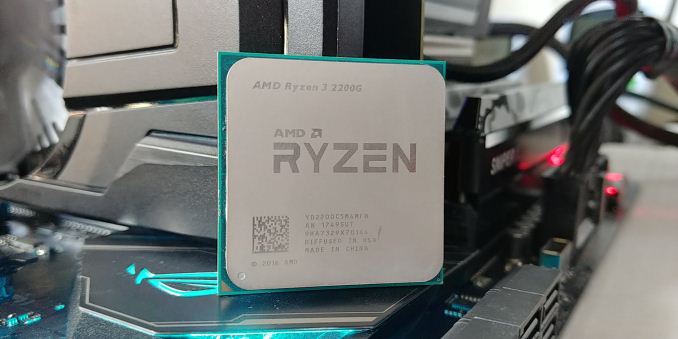








49 Comments
View All Comments
gavbon - Friday, September 28, 2018 - link
Yeah I do agree with you there, but the main purpose of an APU is to utilize the onboard graphics. Ok sure you lose bandwidth due to the limitation of PCIe lanes on them, but the specs have to be cut down somewhere and rather that than CPU or iGPU power.seamonkey79 - Friday, September 28, 2018 - link
By less than 1% in the vast majority of games. For PCIe 3.0/3.1, 8 lanes is still plenty for a card to the point where benchmarks are within the margin of error. That is until you start looking at SLI, on the level of (at least) GTX 1080 Ti or Titan V cards. At that point, you would be building a new system anyway because you'd need a board capable of handling 2 x16 slots, which you wouldn't have bought because a board with video outputs for the APU doesn't come with dual x16 slots. You're also buying a new CPU because you're not sticking $6k worth of hardware on a sub $200 CPU/chipset.https://www.gamersnexus.net/guides/2488-pci-e-3-x8...
https://www.gamersnexus.net/guides/3176-dual-titan...
In their testing, even on the Titan V, with a single card, there was no difference between x8 and x16.
So, no, you're not really in a situation where the APU will 'reduce performance', unless you're buying a sub-$200 CPU to stick in a system with around $6000 worth of dGPU. Which you can't do because you only have a single x8 slot anyway...
nathanddrews - Tuesday, October 2, 2018 - link
Correct, the only limitation is the 2200G/2400G itself (even at 4.1GHz), not the lanes. I've got a 1080Ti in my 3570K setup and I know full well when my CPU is the bottleneck.eva02langley - Saturday, September 29, 2018 - link
8x is performing basically the same for game performances. If you were to compute, that would be another story.It is actually a non-issue.
msroadkill612 - Wednesday, October 17, 2018 - link
Which is why its saddens me that the ~one true single ccx zen+ cpu - 2500x - is oem only.t.s - Friday, September 28, 2018 - link
Please fix: Civ. 6 graph are AVG FPS and AVG FPS, not AVG FPS and 99th %.Ryan Smith - Friday, September 28, 2018 - link
Whoops. Thanks for the heads up. Fixed!Valantar - Friday, September 28, 2018 - link
There are quite a few errors like this throughout the article. F1 for the 2200G are both 99th percentile. TW:W2 (same page) has the correct titles but same data in both images. There was more too, on earlier pages, but since I'm on my phone I can't look through it while writing this. Hope you can take a look.gavbon - Friday, September 28, 2018 - link
Thanks Valantar, fixed them now! Appreciate the heads up!ET - Friday, September 28, 2018 - link
My conclusion from this is that it's worth overclocking the 2200G to 1200 because the default clock performs badly in some cases.